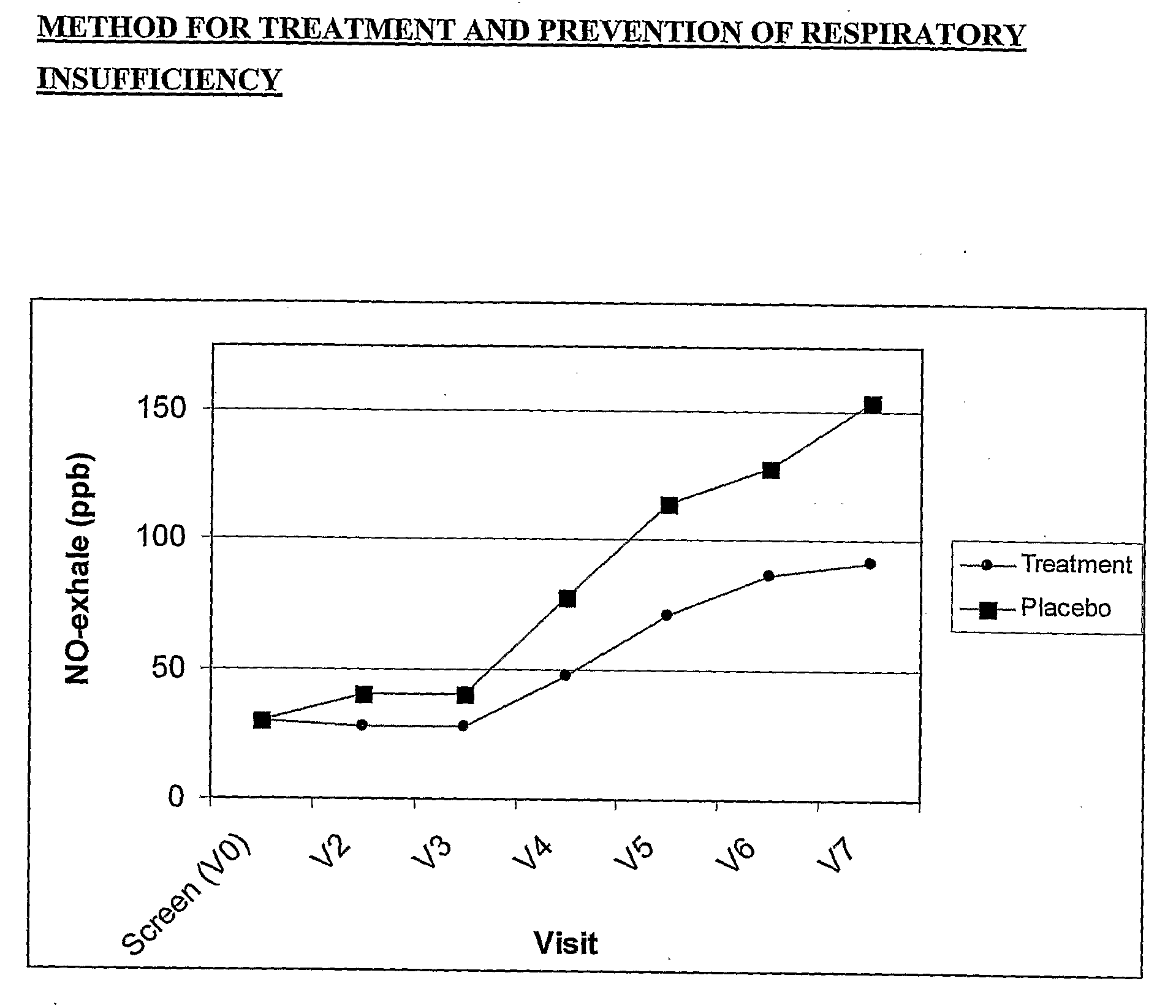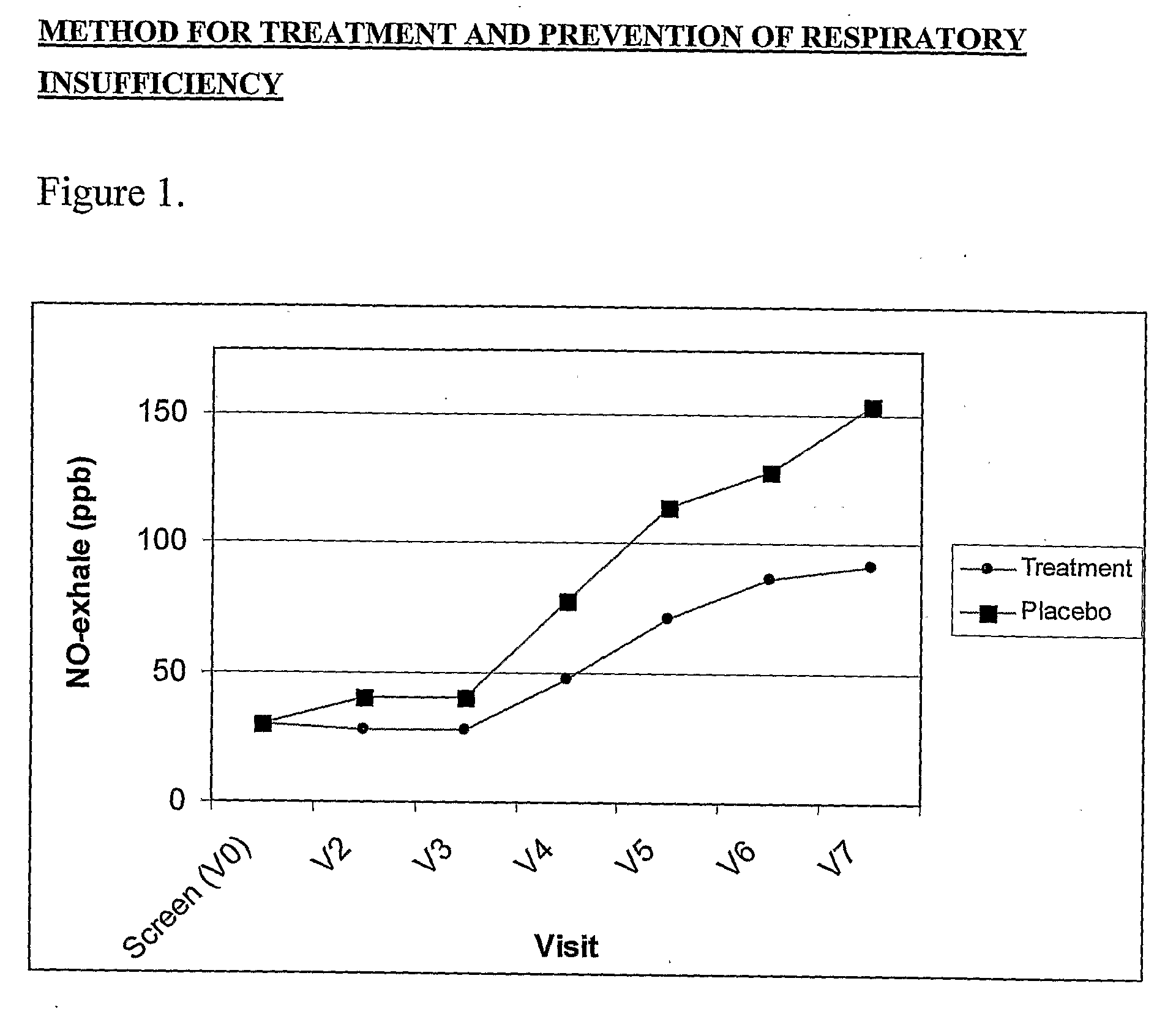Method for treatment and prevention of respiratory insufficiency
a technology for respiratory insufficiency and treatment, applied in the direction of biocide, food preparation, plant growth regulator, etc., can solve the problems of respiratory insufficiency such as airway obstruction and bronchial hyperreactivity, dust mite excretion can form a serious threat to those sensitive to said excretion or to critically ill patients, and mites are not visible, so as to achieve the effect of increasing inflammation and induced airflow limitations
- Summary
- Abstract
- Description
- Claims
- Application Information
AI Technical Summary
Benefits of technology
Problems solved by technology
Method used
Image
Examples
example 1
[0029]A placebo controlled, double blind, randomized study with parallel design was conducted to evaluate the effect of the ingestion of the present composition on the outcome and severity of dust mite secrete induced respiratory insufficiency.
Study Population
[0030]30 children with episodic asthma (GINA I) and dust mite allergy were recruited. Inclusion criteria for study participation were: young, mono-allergenic dust mite allergic patients with beginning asthma, absence of acute exacerbation of diseases, and written informed consent of the patients. Exclusion criteria were: exceptional para-clinical and clinical symptoms, no steady physical conditions, administration of anti-inflammatory drugs (e.g. corticosteroids, acetylsalicylic acid, NSAID etc.), and discontinuation of the supplementation for longer than two days more often than twice.
Study Design
[0031]An explorative, double blind study with parallel group design was conducted. A total of 30 young p...
example 2
[0042]Infant nutrition with a label containing an indication that it can be suitably used for the prevention of dust mite secrete induced respiratory insufficiency.
[0043]Energy: 66 kcal; Protein: 8 en %; Digestible Carbohydrates: 44 en % (containing 7.3 g lactose); Fibre: 0.8 g (containing 0.05 g fructopolysaccharide (Raftiline HP™, Orafti, Tienen, Belgium); 0.55 g transgalactooligosaccharides (Vivinal-GOS™ (Borculo Domo Ingredients, Netherlands); Lipid: 48 en-% (containing, based on total weight of the lipid 0.2 wt.-% DHA; 0.07 wt.-% EPA; 0.5 wt.-% STA; 2.2 wt.-% ALA, 0.2 wt. % GLA; 13 wt.-% LA);
[0044]0.20 g pectin hydrolysate prepared as described in EP-A 1 373 543, example 1. Osmolarity: 300 mOsmol / l. The composition further contains choline (6 mg / 100 ml) and taurine (6.3 mg / 100 ml); minerals and trace elements (including 2 mg zinc / 100 ml) and vitamins in amounts in compliance with the international guidelines for infant milk formula.
PUM
| Property | Measurement | Unit |
|---|---|---|
| weight ratio | aaaaa | aaaaa |
| size | aaaaa | aaaaa |
| weight ratio | aaaaa | aaaaa |
Abstract
Description
Claims
Application Information
 Login to View More
Login to View More - R&D
- Intellectual Property
- Life Sciences
- Materials
- Tech Scout
- Unparalleled Data Quality
- Higher Quality Content
- 60% Fewer Hallucinations
Browse by: Latest US Patents, China's latest patents, Technical Efficacy Thesaurus, Application Domain, Technology Topic, Popular Technical Reports.
© 2025 PatSnap. All rights reserved.Legal|Privacy policy|Modern Slavery Act Transparency Statement|Sitemap|About US| Contact US: help@patsnap.com


